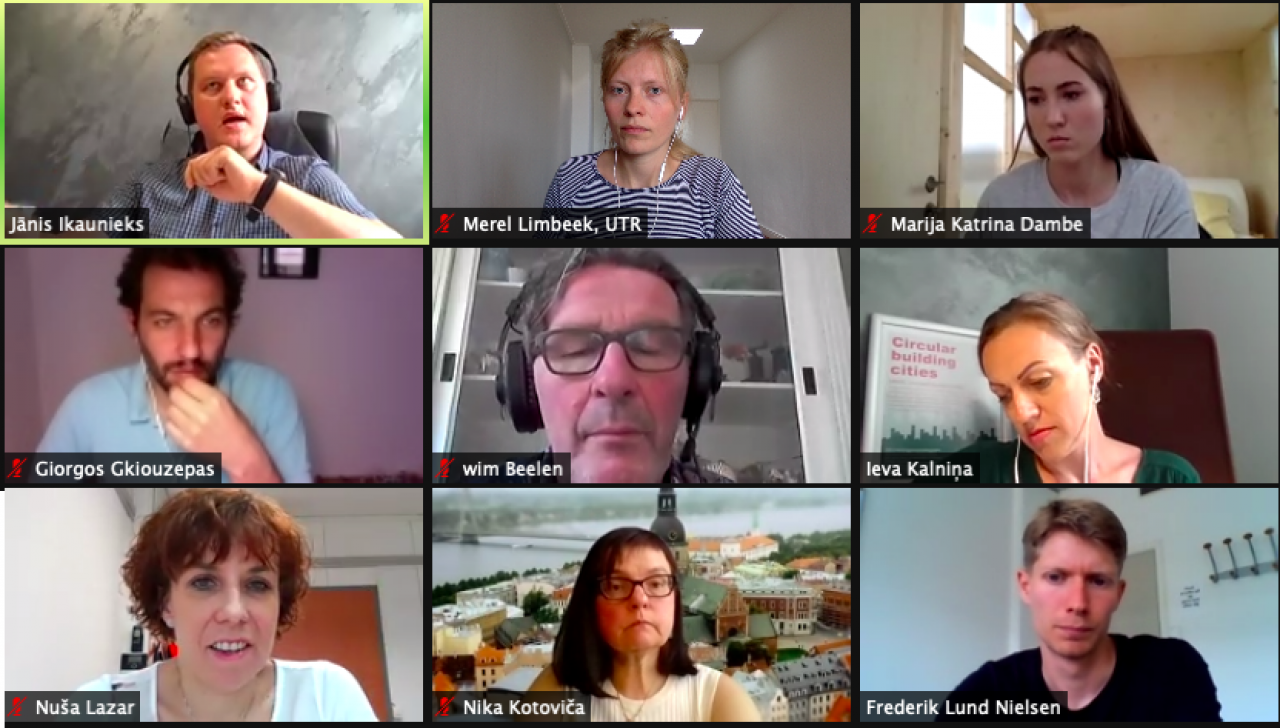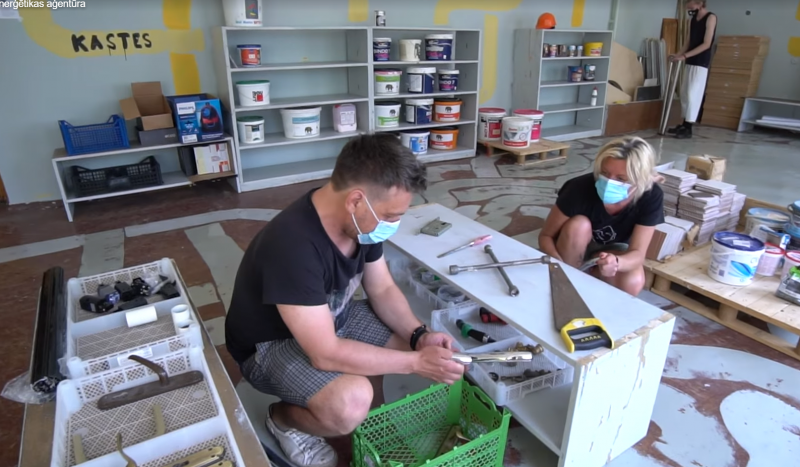
First of all, I would like to say thank you for taking the time to have this conversation! I know you have a lot of work to do, but you always find time to talk. It’s often heard ‘less talk more action’. You don't seem to agree with that, do you? How important do you think it is to talk about ideas on environmental sustainability issues?
It depends on the actions taken. In the case of environmental sustainability, I completely disagree with this saying as sustainability issues mostly are connected with behavioural change. In raising general knowledge and changing people’s behaviour, we need to talk, talk and once again talk about these issues. However, when we are talking about the implementation of measures or pilots, the saying is spot on – less talk, more action.
Lately, we hear a lot about the circular economy. Do you think people are ready to introduce a circular economy in their renovation and construction works? And how can we help them?
From my point of view, people do not have enough knowledge and do not consider that their renovation and construction works can be more sustainable. They may not even realize that they are actually harming the environment. However, I think that those who have heard about the circular economy or evaluate the whole life cycle of construction works are willing to introduce the principles. First of all, it is very important that architects have knowledge of the circular economy and can implement its principles in projects.
You participate in the action planning process in the frame of the URGE project. Which of the planned actions do you see as the most valuable?
My opinion is that there always needs to be a plan on how to achieve your goal. The plan consists of several steps and all of them are, from my point of view, equally valuable. However, one of the key factors in creating a sufficient action plan is a well-covered stakeholder group. I'm thankful to everyone participating in this process.
For the dissemination of circular economy principles, the construction material exchange point – our small-scale activity within URGE – is a success story. We are also very looking forward to implementing three construction pilot projects based on the guidelines developed in the frame of this project.

You are leading the preparation of the new Sustainable Energy and Climate Action Plan (SECAP) for the City of Riga. The Development Programme for the city of Riga is about to be finished. Does circular construction play a role in these plans, and will action plan, developed in the frame of the URGE project, be in line with other planning documents?
We hope to complete the SECAP for the City of Riga by the end of this year. In the SECAP, we have expanded our system in terms of CO2 baseline inventory and general vision. For example, we will also include emissions from waste. As URGE’s action plan is directly connected to the reduction of waste of the construction sector, this will reduce also baseline emissions and is being implemented as a SECAP action. Moreover, the SECAP promotes principles of climate neutrality and circular economy in the renovation and construction of new buildings, especially in the public sector.
Work on the Development Programme started earlier, but we managed to include there several actions from URGE’s action plan. Meanwhile, Riga has stated clearly its direction towards sustainability and circularity. So, yes, I can surely say that the action plan by the project will be strongly linked with the city planning documents and strategies.
If and how does the URGE project help in your daily work? What kind of gains do you see from the integrated planning process and the project itself?
For me personally, the URGE project helps to look at things from a broader perspective and to take into account the whole life cycle of construction. The project has raised awareness and boosted the capacity of many departments and units of the municipality as well as of other stakeholders involved in the process. There is a lot of information provided by the project which forms a base to start taking action. For residents of the city, the most visible and valuable element was the small-scale activity – the construction material exchange point. It gained a lot of interest from citizens and even companies. We are now seeking opportunities how to make it a permanent and develop it into a wider scale action.
There are two main benefits of the project: it opened a conversation with many stakeholders. As I mentioned before - it is crucial. And the second – we will have an action plan.
What is the most interesting thing you have learnt in this project?
For me, the most interesting was to learn that building materials can be leased! And that after dismantling of the temporary building, there was no damage of the materials, and that they can be reused again. At first, this seemed unimaginable. But actually, these are simple things, that can be told to people, both professionals and the general public - how to build and renovate wisely. That's the idea of the circular construction guidelines we are currently developing. Everyone deserves to know these things. That is how we all contribute to a circular economy.
Interview by Ieva Kalnina, ULG coordinator for Riga Energy Agency.
